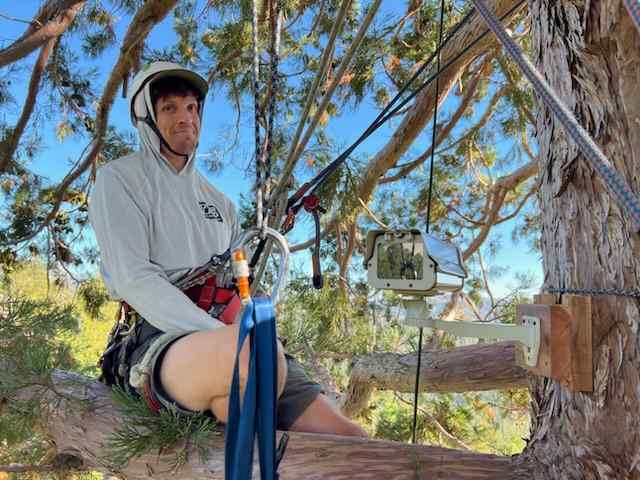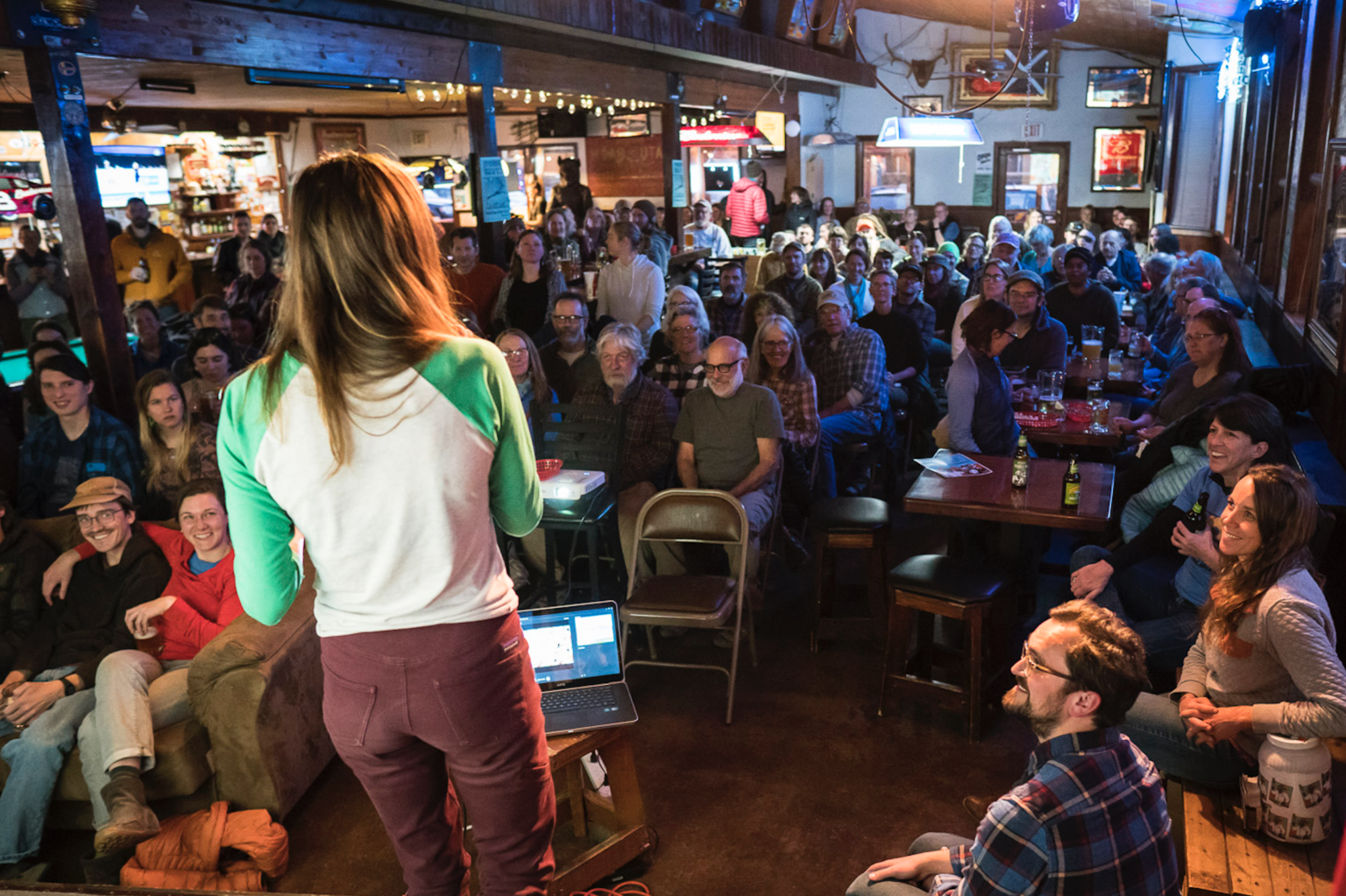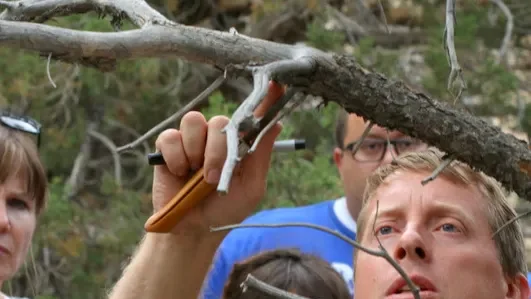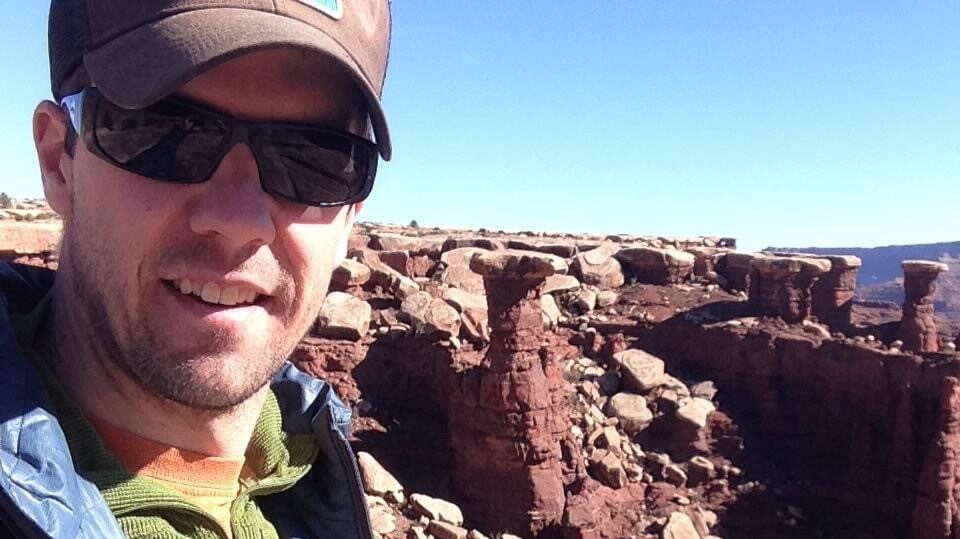Some information may be outdated.
Here on the Colorado Plateau, old-growth juniper and pinyon pine trees can live for 1,000 years. Can these ancient trees remember things that happened to them years ago?
Science Moab explored this enchanting question with Drew Peltier, an assistant professor at the University of Nevada, Las Vegas. Drew is a tree ecophysiologist interested in how climate influences tree growth in our changing world. He does this by studying what he calls “memory” in trees.

Science Moab: What do you mean when you refer to “memory” in trees?
Peltier: When I say trees have memory, it’s just an analogy. Animals obviously have memory—they have neurons and nervous systems that serve to produce the memories that you and I are familiar with. But trees are such long-lived, complex organisms that it really is a useful word to use to describe the slow, progressive way in which trees respond to their environment over years and decades and centuries.
Science Moab: What are some of the things you are working on, in terms of studying tree growth and how trees respond to their environment?
Peltier: Some people are familiar with what we call dendrochronology, which is the science of using tree rings to study past climates and environments. Tree rings can be used to study all sorts of things about the past: rain, droughts, heatwaves, volcanoes, fires, even salmon runs in the Pacific Northwest. Tree rings are a really powerful tool that can even tell us about our own human history in the Southwest. A new branch of tree science is dendroecology, which is using tree rings to study ecosystems and [the biology of the] trees themselves. This is the work that I do. One interesting thing to come out of this study is the finding of so-called “drought legacies,” which are examples of the “memory” phenomenon that I’m talking about. Every time we have a really extreme drought in the southwestern US, tree rings show that for multiple years. If you look two, three, four, or five years after that extreme drought event, oftentimes trees will show less growth than normal. So, they “remember” that drought event for multiple years.
What we see—and it’s very clear—is that those extreme drought events are happening more often. The concern here is that if we have all these trees on the landscape that are recovering from a drought that happened one or two years ago, and we have another drought in quick succession, how does that influence trees’ ability to be resilient to that drought event? Are they more likely to experience mortality, to die?
Science Moab: What methods are you using to study this?
Peltier: Using tree rings to understand how trees are processing and responding to their environment is what we do and what I’m really interested in. In the Southwest, we have all sorts of tree ring records from a century of collecting tree rings all over [the region] and those are really useful because they capture all this environmental variation. We can look at correlations between tree ring width and climate extremes. We use those large datasets to produce complicated statistical models that quantify this memory.
The other thing that we do is go out and measure things about trees while they’re experiencing these drought events. There are lots of different examples, but probably the most interesting one is the concept of carbon reserves. Essentially, carbon reserves are stores of products from past photosynthesis. Just like animals store fat, plants and trees store sugars for a very long time. One [way] tree memory might work is that trees use their stores of things like these sugars that they took in from the atmosphere many years ago to support their growth and metabolism during times of stress, like a drought.
Science Moab: Have you applied some of these methods in the Southwest?
Peltier: We’ve studied this all over the Colorado Plateau, specifically in trembling aspen and two-needle pinyon pine. Aspen trees in southern Utah had on the order of 20-year-old carbon reserves in their deepest tree rings. Pinyon pine in central New Mexico, similarly, had on the order of 20-year-old carbon reserves. We can also see that those reserves are used by the trees in certain circumstances that are relevant to the things that we’re thinking about in terms of climate change, like extreme drought.
Science Moab: What are some of your research ambitions? What do you want to study next in the Southwest?
Peltier: One thing that we would like to do is work in some of the “sky island” ecosystems across Nevada to understand how trees are experiencing and responding to climate change, and to have some predictions about how they will be able to respond in the future. The key to that is not just having tree ring data, but also collecting lots of other physiological data about these trees over long periods of time. One of the things that we’re interested in is understanding how much water each tree is able to move from its roots to the atmosphere, if that’s changing, and how difficult it is for trees to do that. We call this water potential. Another goal of ours is trying to understand which conditions lead to really good tree growth and which don’t, when those conditions happen, and how those conditions interact with phenology, or the seasons. By putting all those things together, we hope to have a really holistic view of how tree growth works in our dry southwestern forest ecosystems.
Appreciate the coverage? Help keep local news alive.
Chip in to support the Moab Sun News.




